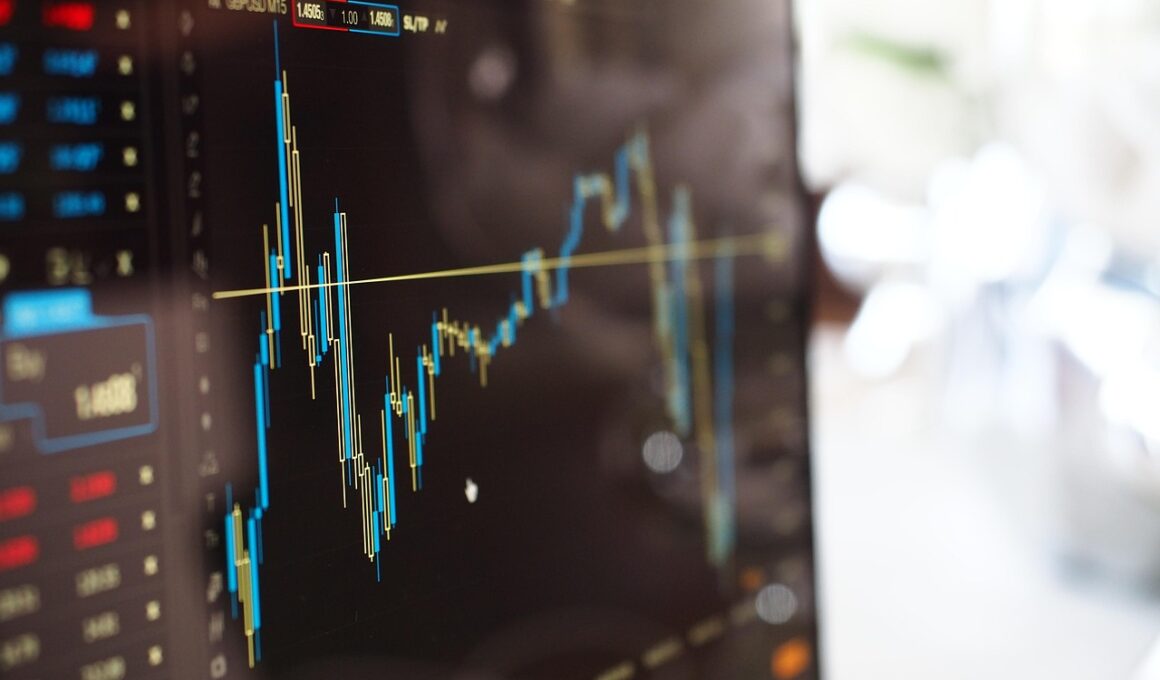How to Optimize Execution Speed in Algorithmic Trading
Optimizing execution speed in algorithmic trading is crucial for maximizing trade profitability. Traders must minimize latency to execute trades at the best possible prices. Latency, the delay between sending a trade order and its execution, can significantly impact results. Utilizing high-speed direct market access (DMA) can reduce latency substantially. Moreover, employing co-location services, where traders’ servers are housed nearby exchanges, further enhances speeds. This can help in receiving immediate market data feeds, allowing for quicker decisions. Utilizing efficient programming languages such as C++ or C# can also improve the performance of trading algorithms. Moreover, optimizing code execution paths ensures that the logic runs without unnecessary delays, processing only essential data. The trading strategy itself should focus on low-latency executions to harness market inefficiencies. Additionally, developing algorithms that adapt to market circumstances in real-time can provide a significant advantage, as faster adjustments yield better performance. Consistent monitoring of network performance can reveal bottlenecks. Implementing redundancy systems ensures that trades are executed even during system malfunctions. Frequently testing systems and algorithms helps in maintaining high responsiveness and performance. A robust technological infrastructure is essential in achieving optimal execution speed.
In the competitive arena of algorithmic trading, ensuring timely execution can be a definitive factor separating profit from loss. Speed optimization strategies encompass a wide range of techniques and tools. One effective approach is to leverage advanced hardware systems designed for trading operations. Using cutting-edge servers with rapid processing capabilities enables algorithms to execute trades faster. Network optimization techniques, such as utilizing fiber optic connections, can reduce data transmission times significantly. Equally important is the selection of efficient trading platforms or brokers that minimize order execution times. Analyzing performance metrics allows traders to identify sluggish parts of their infrastructure, facilitating timely interventions. Another valuable strategy involves the use of predictive analytics and machine learning algorithms, which can anticipate market moves in advance, allowing for quicker responses. Additionally, traders should regularly assess the market conditions to adjust their strategies dynamically. Keeping up with technology trends in the trading industry can provide new tools to maintain speed. Comprehensive training for trading teams on the latest technologies is equally beneficial. Ultimately, maintaining optimal execution speed requires a holistic approach that combines technology, strategy, and continuous improvement.
Implementing Real-time Monitoring Tools
Real-time monitoring tools are essential in highlighting potential execution delays. By employing cutting-edge dashboard solutions, traders can instantly receive notifications about market changes. Incorporating alerts ensures that traders can act promptly to take advantage of favorable conditions. Visualization tools can assist in understanding complex data flows while identifying bottlenecks quickly. Additionally, proper data analytics can provide insights into historical performance, allowing for refined future strategies. Active tracking of latency levels offers a clearer picture of any system hiccups during trading hours. Adjustments based on these analytics can optimize system operations and improve decision-making. Adopting an agile project management approach fosters adaptability in strategy adjustments. Moreover, using APIs to connect different services helps streamline data accessibility, leading to faster execution. Establishing a feedback loop mechanism can encourage ongoing system evaluations and improvements. Collaborating with developers and IT support teams facilitates better integration of monitoring tools, ensuring a cohesive operational structure. In summary, implementing these tools not only boosts execution speed but also enhances overall trading accuracy, creating a more favorable trading environment. Regular assessments of these tools are necessary to ensure they evolve and meet the rapidly changing market dynamics.
Test how effectively your algorithms execute trades under pressure through rigorous backtesting techniques. Thorough testing against historical data helps traders identify strengths and weaknesses in their strategies. This can reveal how execution times may change, depending on market conditions. Simulations can mimic various scenarios, helping to pinpoint potential failures before real trades are conducted. By employing virtual trading environments, risk is minimized, while learning optimization techniques can significantly enhance performance levels. While backtesting is essential, running real-time tests in a controlled manner can shed light on algorithm responsiveness. Accurate benchmarking of trade performance can guide necessary optimizations. Understanding historical execution times creates a baseline for future performance expectations. Engaging with peer reviews and community forums can shed light on innovative strategies for increasing execution speed. Additionally, analysis of competitors’ performance metrics can reveal industry best practices. Cybersecurity measures must not be overlooked, as system breaches can lead to significant delays. Establishing a secure infrastructure ensures that trading algorithms operate without disruption. By focusing on both performance and security, traders can create robust systems that enhance execution speed while remaining resilient against external threats.
The Role of Data Management
Data management plays a crucial role in optimizing execution speed for algorithmic trading. Traders must ensure that the data they are analyzing is both timely and accurate. Poor data quality can result in delayed decision-making and subsequently impact trade execution. Implementing a robust data governance framework can enhance data reliability and accuracy. Additionally, employing cloud-based solutions allows for quick access to large datasets, facilitating faster analytics processing. Streamlined data pipelines minimize latency issues, ensuring that information flows seamlessly between trading systems. Furthermore, using data compression techniques can enhance speed when transmitting large volumes of information. Regularly purging outdated datasets keeps databases lean and efficient, enhancing performance. Utilizing caching solutions ensures frequently accessed data can be retrieved instantaneously. Adopting a systematic approach to data normalization improves data quality significantly, fostering consistency across systems. Partnerships with reputable data providers can enhance the accuracy of market data feeds, which is critical for algorithmic performance. Intelligent data categorization allows machines to process information with greater agility. Reinforcing these management strategies effectively leads to optimized speed during trade executions, which ultimately translates into better trading outcomes.
Algorithmic trading demands a detailed understanding of optimal trade execution practices. Effective strategies encompass the need to improve communication between various components in the trading system. High-frequency trading strategies necessitate sophisticated networking solutions to facilitate speedy order routing. Utilizing multithreading capabilities enables simultaneous processing of multiple orders, significantly reducing execution times. Ensuring that system architecture supports real-time data streaming plays an essential role in this area. Moreover, minimizing the number of external calls during order execution can lead to enhanced speed. Utilizing a condensed programming approach reduces overhead effectively. Fine-tuning order types can yield better opportunities and responsiveness within the executing environment. Traders may benefit from using iceberg orders, which can limit market impact and improve execution timings. Developing a solid understanding of market microstructure allows for designing better trading algorithms tuned for speed. Regular reviews and evaluations of trading performance enhance decision-making and implementation speed. This leads to continuous refinement of the execution process. Overall, enhancing execution speed while minimizing costs is vital in achieving higher profitability, making it necessary for traders to continuously optimize their operations. Speed, efficiency, and cost management are interrelated in successful algorithmic trading.
Future Innovations and Trends
Lastly, staying abreast of future innovations and trends in algorithmic trading can significantly impact execution speed. Emerging technologies like artificial intelligence and machine learning offer opportunities to further refine strategies and optimize decision-making processes. Automated systems can be leveraged for analyzing vast data quickly, identifying trends in real-time to exploit market opportunities. The use of quantum computing could advance algorithms to new levels of processing speed. Additionally, blockchain technology may introduce enhanced security and transparency to the trading process, which can reduce execution time delays. As markets evolve, incorporating these innovations into existing systems is crucial for maintaining competitive edges. Continuous investment in technology infrastructure ensures that traders remain agile and responsive. Experimenting with decentralized finance (DeFi) platforms presents new avenues for trading strategies that leverage automated execution. Moreover, leveraging augmented reality (AR) could potentially enhance how traders visualize data and make decisions instantaneously. Collaborating across disciplines can foster creative solutions that enhance execution techniques and speed. Ultimately, being ahead of the curve can dictate successful algorithmic trading outcomes and pave the path for long-term sustainability and profitability.


